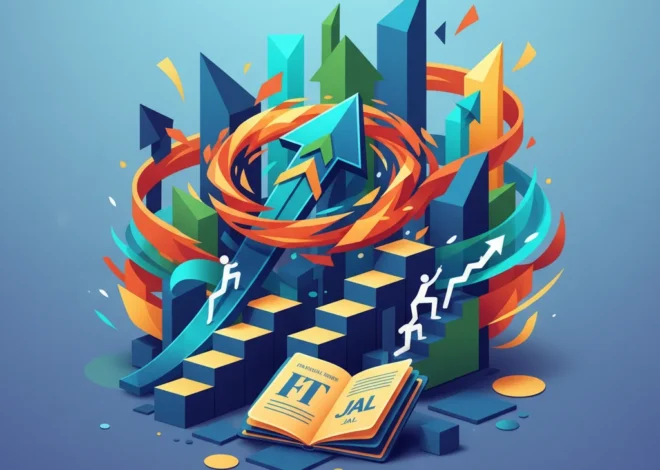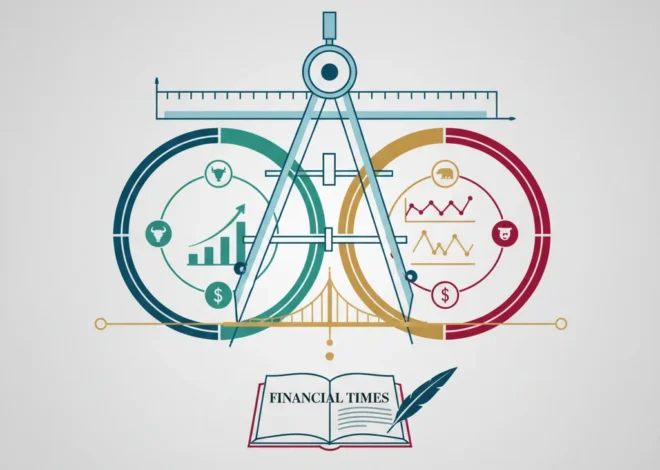
The Investor’s Solitude: What a Nobel Prize Winner’s Novel Teaches Us About the Market’s Trance
In the world of high-stakes finance, we often focus on the external: the frenetic energy of the trading floor, the relentless stream of market data, the macroeconomic forces shaping our economy. But what if the most critical battlefield isn’t on a screen or a spreadsheet, but within the silent, solitary confines of the investor’s mind? This is the unexpected intersection where the stark, existential world of Nobel laureate Jon Fosse and the pragmatic reality of modern investing collide.
Fosse’s first novel since winning the Nobel Prize, Vaim, has been described by the Financial Times as an “immersive, trance-like” journey into the minds of three lonely men. The title, Norwegian for “wail” or “moan,” hints at a deep, underlying disquiet. While a Norwegian literary novel might seem worlds away from the concerns of finance professionals and business leaders, its exploration of solitude, internal monologue, and the hypnotic pull of repetitive thought offers a powerful metaphor for navigating the psychological complexities of the stock market and the broader financial landscape.
How can the “strange and surprising” world of Fosse’s prose illuminate the challenges of trading, portfolio management, and strategic financial planning? By looking inward, we can uncover the behavioral traps and mental models that dictate success or failure in an increasingly volatile global economy.
The Echo Chamber: Solitude and the Investor’s Inner Monologue
At its core, high-level investing is a solitary pursuit. Whether you are a portfolio manager, a day trader, or a CEO making a critical capital allocation decision, the final call is yours alone. You are isolated with the data, the risk, and the consequences. This professional solitude mirrors the experience of Fosse’s characters, who are lost in their own recursive, internal narratives. Their thoughts circle, repeat, and build a reality that can feel disconnected from the outside world.
This is a familiar state for anyone deep in financial analysis. The intense focus required can feel like a trance, a state of “flow” where the outside world fades away. While this focus is necessary, it also creates a dangerous echo chamber. Without external checks, our own biases can become amplified. Confirmation bias leads us to seek data that supports our existing thesis, while narrative fallacy causes us to weave a compelling story around a few data points, ignoring contradictory evidence. A recent study on behavioral economics highlighted that over 90% of amateur traders who fail do so because of psychological factors, not flawed strategies (source).
The modern world of fintech has, in some ways, deepened this solitude. Algorithmic trading and AI-driven analysis tools provide incredible power, but they can also distance us from the tangible, human elements of the market. We interact with dashboards and data streams, further enclosing us in our analytical bubble. The key takeaway is the need for intentional dissent—seeking out opposing views, stress-testing our own assumptions, and building a trusted network to break the solitary trance before it leads to a costly decision.
Market Hypnosis: Resisting the Incantatory Pull of the Herd
Fosse’s prose is often described as “hypnotic” and “incantatory,” using repetition and rhythm to draw the reader into a specific state of mind. This is a perfect analogy for the behavior of the stock market. Market trends, especially in bull or bear cycles, develop a hypnotic momentum of their own. The daily chatter, the rising or falling numbers, the chorus of pundits—it all combines into an incantation that can lull even the most disciplined investor into following the herd.
This “market trance” is where bubbles are born and panics are ignited. It’s the fear of missing out (FOMO) that drives investors into overpriced assets and the panic that causes them to sell at the bottom. A disciplined strategy, much like Fosse’s minimalist style, is the antidote. It involves focusing on a few core, unshakeable principles and applying them with relentless consistency, regardless of the market’s emotional “wail.”
Consider the contrast between succumbing to the market’s trance and adhering to a disciplined financial strategy:
| The Market Trance (Emotional Investing) | The Disciplined Strategy (Systematic Investing) |
|---|---|
| Driven by headlines, social media, and market “noise.” | Driven by fundamental analysis, long-term goals, and predefined rules. |
| Decisions are reactive and based on short-term price movements. | Decisions are proactive and based on intrinsic value and risk tolerance. |
| Characterized by high trading frequency and emotional swings. | Characterized by patience, periodic rebalancing, and emotional detachment. |
| Leads to buying high (FOMO) and selling low (panic). | Enables buying low (opportunism) and selling high (discipline). |
| Views the economy as a source of constant anxiety. | Views economic cycles as a source of predictable opportunity. |
Breaking free from the market’s hypnosis requires a conscious effort to step back, quiet the noise, and re-engage with your foundational principles. It’s about trusting your system over the siren song of the crowd.
Interpreting the “Wail”: Distress Signals in a Volatile Economy
The novel’s title, Vaim, or “wail,” evokes a sense of primal, non-verbal distress. This is an apt description of the signals a volatile market often sends. A sudden drop in an index, a spike in the VIX, a credit crunch in the banking sector—these are not nuanced arguments; they are wails of fear and uncertainty. The inexperienced investor hears this wail and reacts with panic. The seasoned professional, however, has learned to interpret it.
What is the wail telling us? Is it a momentary panic or a signal of a deep, structural shift in the economics of a sector? Is it a liquidity crisis or a solvency crisis? Answering these questions requires moving beyond the emotional reaction and engaging in deep, analytical work. This is where emerging technologies like blockchain and advanced AI can play a crucial role. Blockchain offers transparent, immutable ledgers that can provide clarity in opaque financial systems, while AI can process vast, unstructured datasets to identify the root cause of market distress far faster than any human. According to a recent industry report, the use of AI in risk management has increased by over 60% in the last two years alone (source).
The goal is not to ignore the market’s wail, but to understand its language. By doing so, investors can distinguish between noise and signal, turning moments of widespread panic into strategic opportunities. This ability to find clarity amidst chaos is what separates fleeting success from enduring wealth.
Conclusion: Mastering the Inner World of Investing
Jon Fosse’s Vaim, in its profound exploration of the human interior, offers an unlikely but essential lesson for the world of finance. It reminds us that markets are not just a collection of assets and algorithms; they are a reflection of collective human psychology, with all its flaws, fears, and irrationalities. The journey of the investor, much like that of Fosse’s characters, is fundamentally an internal one.
Success is not merely about having the best models or the fastest access to information. It’s about mastering the solitude of decision-making, resisting the hypnotic pull of market sentiment, and learning to interpret the raw emotion of financial data. By understanding our own internal monologue—the biases, the narratives, the emotional triggers—we can build the resilience and discipline needed to navigate the external chaos.
In the end, the most important asset class to master is not equities, bonds, or even crypto. It is the complex, challenging, and ultimately powerful inner world of the investor’s own mind.


